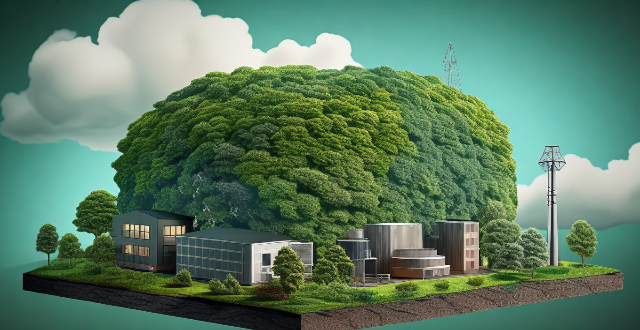The greenhouse effect is essential for life on Earth, but human activities have increased its intensity, leading to global warming. Strategies to reverse this enhanced effect include reducing emissions through renewable energy and energy efficiency, reforestation, carbon capture and storage, and negative emissions technologies like direct air capture. However, challenges such as technical feasibility, political will, economic impact, and environmental trade-offs must be considered. While a complete reversal may not be fully achievable in the short term, significant progress can be made with concerted global efforts.

Can the Greenhouse Effect be Reversed?
The greenhouse effect is a natural process that warms the Earth's surface by trapping heat in the atmosphere. However, human activities such as burning fossil fuels and deforestation have increased the concentration of greenhouse gases, leading to global warming. The question then arises: can this enhanced greenhouse effect be reversed?
Key Points:
- Understanding the Greenhouse Effect: Before discussing reversal, it's important to understand what causes the greenhouse effect and how it works.
- Current State of Greenhouse Gases: We need to examine the current levels of greenhouse gases and their impact on global temperatures.
- Potential Solutions: There are various strategies that could potentially reduce or reverse the enhanced greenhouse effect.
- Challenges and Considerations: Any solution comes with challenges and trade-offs that must be considered.
---
Understanding the Greenhouse Effect
The greenhouse effect is essential for life on Earth because it keeps our planet warm enough to support diverse ecosystems. Without it, the Earth would be too cold to sustain most forms of life as we know them. The problem arises when the concentration of greenhouse gases increases beyond natural levels due to human activities.
Current State of Greenhouse Gases
Carbon dioxide (CO2), methane (CH4), and nitrous oxide (N2O) are among the primary greenhouse gases emitted through human activities. Their concentrations in the atmosphere have risen significantly since the Industrial Revolution, contributing to an increase in global average temperatures.
Potential Solutions
Reducing Emissions
1. Transition to Renewable Energy: Switching from fossil fuels to renewable sources like solar, wind, and hydroelectric power can significantly reduce CO2 emissions.
2. Energy Efficiency: Improving energy efficiency in buildings, transportation, and industry can also lower emissions without sacrificing comfort or productivity.
3. Reforestation: Planting more trees can help absorb CO2 from the atmosphere and restore natural carbon sinks.
Carbon Capture and Storage (CCS)
Developing technologies to capture CO2 emissions from power plants and industrial processes and storing them underground could potentially remove large amounts of CO2 from the atmosphere.
Negative Emissions Technologies
In addition to reducing emissions, some technologies aim to actively remove CO2 from the atmosphere:
- Direct Air Capture: Machines that pull CO2 directly from the air and store it permanently.
- Enhanced Rock Weathering: Accelerating the natural process by which rocks absorb CO2 could sequester large amounts over long periods.
Challenges and Considerations
- Technical Feasibility: Some proposed solutions are still in the research phase and may not be scalable or economically viable yet.
- Political Will: International cooperation and policy changes are necessary to implement widespread changes in energy use and conservation practices.
- Economic Impact: Transitioning away from fossil fuels could affect economies heavily dependent on these industries, necessitating careful management and potential compensation strategies.
- Environmental Trade-offs: For example, bioenergy plantations might lead to deforestation unless carefully managed, and CCS has risks associated with geological storage.
In conclusion, while complete reversal of the enhanced greenhouse effect back to pre-industrial levels is ambitious and may not be fully achievable in the short term, significant reductions in greenhouse gas concentrations and mitigation of further warming are within reach with concerted global efforts.